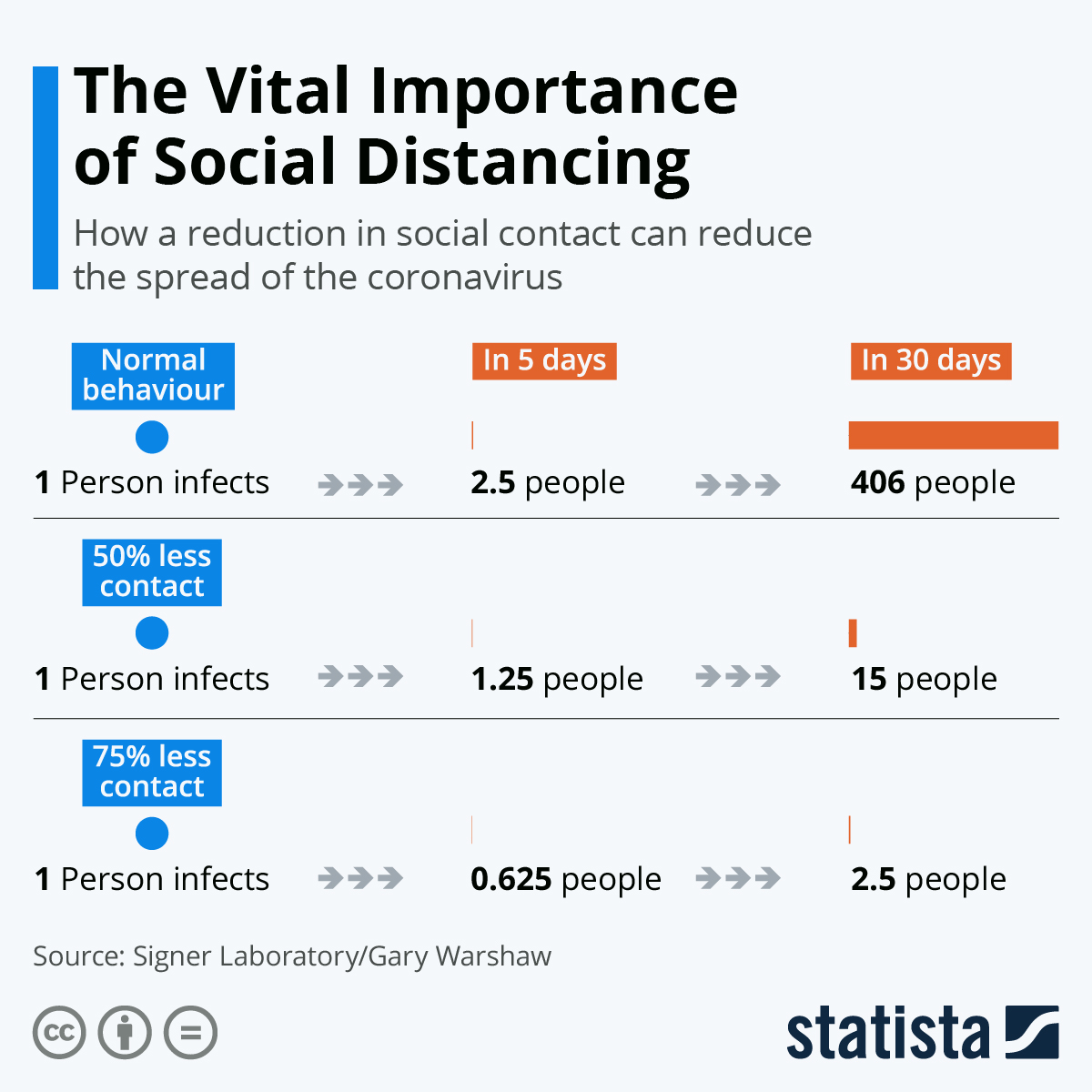In order to stem the spread of the coronavirus, social interactions around the world are being restricted. This infographic, based on calculations by Robert A. J. Signer, Assistant Professor of Medicine at the University of California San Diego, shows how this so-called social distancing can reduce the spread of the virus.
With no changes to social behaviour, one infected person will on average pass the virus to 2.5 people within five days. After 30 days, the figure would rise to a devastating 406 new infections. The number can be significantly reduced though by engaging in less social contact. With a 50 percent reduction, the number of new infections caused by the average person after 30 days is just 15 people. A 75 percent change would result in an even lower 2.5 new cases – greatly reducing the burden on health services and, if followed by everybody, allowing a country to ‘flatten the curve’ of new infections.
source statista

You will find more infographics at Statista
also read
The Guardian: Japanese flu drug “clearly effective” in treating coronavirus, says China
Coronavirus: 71 new cases in Greece – 695 in total
Coronavirus: UEFA postpones the Champions League & Europa League finals indefinitely
Ask me anything
Explore related questions





